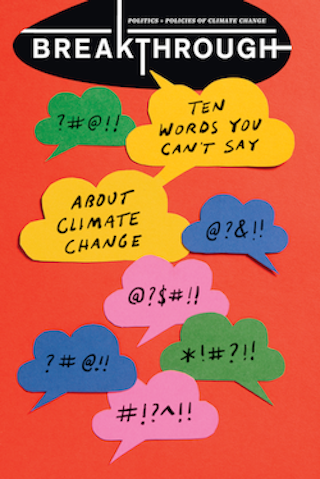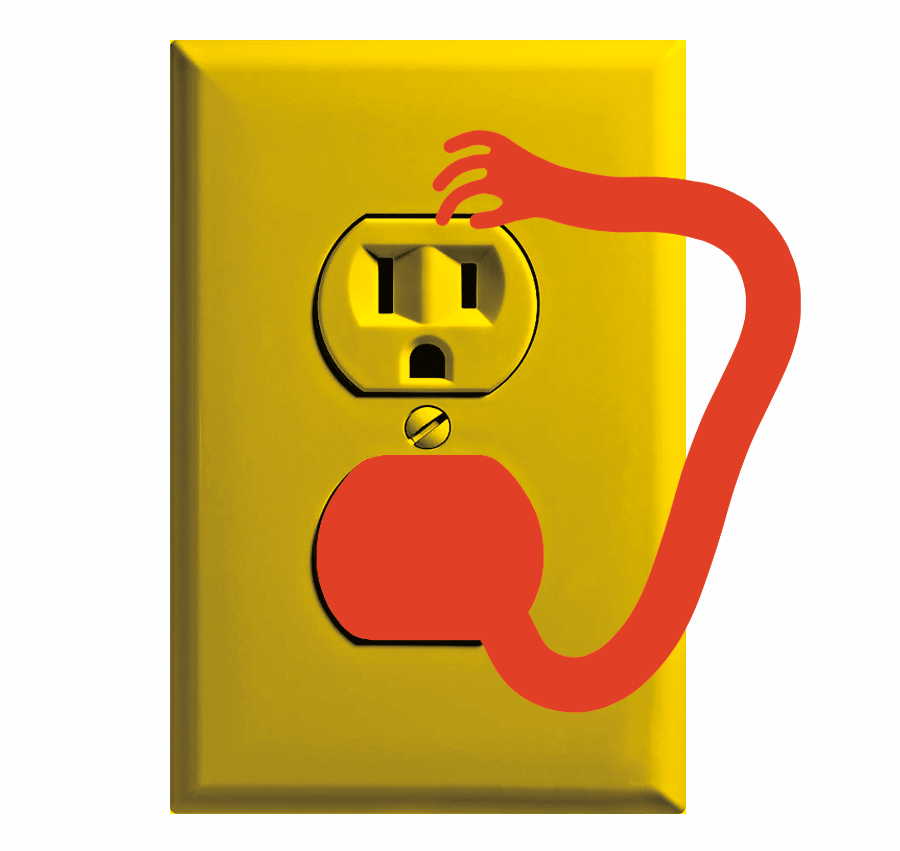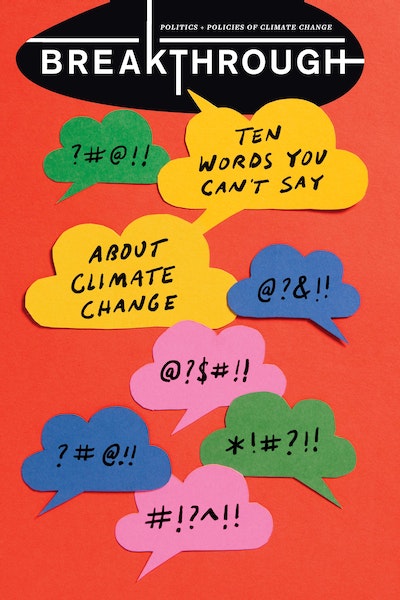The Myth of Solar “Power”
How confusion about energy and power distort environmental discourse—and solutions
-
-
Share
-
Share via Twitter -
Share via Facebook -
Share via Email
-
In November 2022, France passed a law requiring that all parking lots with 80 spaces or more install roofs with solar panels to cover at least half the spaces. According to government estimates, the initiative will result in 11 gigawatts of power—an amount, Grist gleefully reported, that would be enough to power 8 million homes.

In fact, it’s enough to power zero homes.
OK, but what about the claims on Twitter, in The Washington Post, and from renewables advocates that the panels, with a total output of 11 gigawatts, would be the equivalent of 10 nuclear reactors?
Wrong, too.
One of the most pernicious confusions in discussions about decarbonization is the distinction between power and energy. Switching those terms around in general conversation may seem innocuous, but if the confusion rises to the level of policy, the lights don’t stay on. And the really troubling thing is that some advocates—particularly in the solar and wind space, but also in the nuclear industry—have made it their business to disorient us.
The problem of capacity
Before the 1990s and 2000s, reactors in the United States were called “nuclear power plants.” But at some point, the industry decided that “power” had overtones of military technology, and so energy companies opted to rebrand many reactors as “nuclear energy plants.” In New York, for example, the much-fought-over Indian Point, which began life in 1963 with paeans to “atomic energy,” renamed itself the Indian Point Energy Center, with no mention of nuclear. That didn’t help; Governor Andrew Cuomo (who later had to resign because of other misdeeds) forced it to close in 2020 and 2021.
In fact, nuclear facilities produce both power and energy, and in engineering terms, those are very different things.
Energy is a quantity of work, usually measured in kilowatt-hours. If you have five 20-watt fluorescent lights running for 10 hours, they have done that work by consuming 1,000 watt-hours, or 1 kilowatt-hour of energy (20 watts × 5 bulbs = 100 watts, × 10 hours = 1,000 watt-hours). One kilowatt-hour of energy is also roughly what it takes to run a kitchen refrigerator and freezer for a day. Whatever work the kilowatt-hour is spent on, you can say how much fuel it took if you know the efficiency of the generator and whether that generator uses coal, natural gas, gasoline, or anything else.
Power, by contrast, doesn’t measure work. It’s an instantaneous measure of energy flow. Each of your five fluorescent lights needed 20 watts of power, continuously, or 100 in total. If you have a small rooftop solar panel that can generate 50 watts of power, it wouldn’t matter how long the generator runs for or how much energy it produces and stores—on a very sunny day in Arizona in the summer, for example, it might be able to produce 300 watt-hours, or 0.3 kilowatt-hours, over a 24-hour period—at any given moment, it would only be able to power two of the lightbulbs.

In short, energy can outstrip power. But power can also outstrip energy. For example, France’s parking lot solar panels might actually produce the equivalent of 10 nuclear reactors’ worth of energy if the solar panels were in outer space and were irradiated 24 hours a day, running as many hours as an earth-bound nuclear plant does. But on earth, depending on climate, they will produce only about 25% as much energy, which comes from a combination of the times when the sun is down, or is too low in the sky to generate much current, or when it has been obscured by clouds.
Engineers refer to that 25% as a capacity factor, meaning the ratio of energy actually produced to the theoretical energy capacity of the machine. A little arithmetic will help illustrate this. The year has 8,742 hours, taking into account leap years. If the capacity factor of a solar panel is 25%, then it runs for 2,186 of those hours. A solar installation like France’s of 11 gigawatts (11,000,000 megawatts) will yield about 24 million megawatt-hours of energy a year.
By contrast, American nuclear plants have capacity factors averaging about 92.5%. So a 1-gigawatt nuclear plant (the typical wattage in the United States) will produce three or four times as much energy as a 1-gigawatt solar farm.
The International Energy Agency (IEA) recently issued a report that illustrates the spread between power and energy. By 2027, it said, renewables would constitute 52.7% of the world’s power capacity—that’s over half of its total production capabilities. But renewables would produce only 38.1% of the energy used.
Imagine all the power plants in a tug of war, with renewables on one side and everything else on the other. If all the renewables were running, they would be more powerful, and win the tug of war, presuming the IEA prediction is correct. But there is no time when all the renewables are running, so they cannot do most of the work. Less powerful sources that can run more hours do that.
For example, coal, with only 20.9% of the generating capacity, will make 29.7% of the electric energy, according to the prediction.
The reason, again, is capacity factor. Wind machines and solar panels don’t operate all the time; solar panels, in fact, only operate at full capacity at noon, and generally produce hardly any electricity in the first and last hours of daylight. Their capacity factors top out at around 29% in the Utah desert, hitting 17% in New Jersey, according to the Energy Information Administration, and 10-13% in Germany, where the Greens have forced the shutdown of nuclear plants in anticipation of bountiful electricity from sun and wind.
France, whose parking lots will soon be transformed, is a little sunnier than Germany, depending on precise location. But it doesn’t compare with the Utah desert.
ChatGPT HAS ENTERED THE CONVERSATION...
In environmentalist discussions about solar energy, the term “power” typically refers to the capacity to produce electricity. In the context of solar energy, “power” is often used to describe the amount of electricity that a solar panel or a solar energy system is capable of producing. For example, a solar panel with a capacity of 300 watts means that it can produce 300 watts of electricity at any given time.
In environmentalist discussions about solar energy, “power” is also used to describe the potential for solar energy to provide electricity to homes, businesses, and communities. Solar energy is seen as a clean, renewable source of energy that can help to reduce greenhouse gas emissions, curb air and water pollution, and mitigate the impacts of climate change. Environmentalists often promote the use of solar energy as a way to move away from fossil fuels and to promote greater energy independence and sustainability.
In addition to the potential to produce electricity, solar energy also has the potential to empower communities, especially those that are traditionally underserved or disadvantaged, by providing them with a more reliable and cost-effective source of energy. Environmentalists often view the development of solar energy as a way to create jobs, stimulate economic growth, and improve the quality of life in communities around the world.
Powering down
In the United States, a suburban house that’s slightly larger than average and uses air conditioning during the summer will need about a megawatt-hour of energy per month. On a suburban commercial strip, a big-box store that includes a supermarket might need about 1 megawatt-hour per hour for its lights, refrigerators and freezers, heating, ventilation and air conditioning, cash registers, and so on. In Europe, energy needs are somewhat lower—about 3.7 megawatt-hours per household per year in the European Union, vs. nearly 12 in the United States—since houses are smaller and use less energy, and in some places the climate is milder.
Conceivably, then, France’s new solar panels could meet the energy needs of 8 million homes, generating during daylight hours as much energy as the houses or apartments use over the course of a day. But could the panels power those homes? Indeed, the solar panels could meet the power demands of 8 million homes. But only if those homes only demand power when the sun is shining high in the sky.
But people often need energy when it isn’t, and because energy demands are not fully correlated to daylight, the energy produced by daylight varies in value. On cool spring days, when the air conditioning load is light and the sun is up for many hours, an abundance of solar can flood the market and push wholesale energy prices down to zero, or even below. (It goes below zero when grid operators—threatened with blackouts because of too much energy—set negative prices in order to induce generators to shut down.) Wind can sometimes produce the same result because its production peaks at night, when demand is usually low.
On the other hand, at sunset on a hot day, demand can reach a peak, and prices, set by supply and demand, will rise, inducing the most expensive, least-efficient generators fueled by coal or natural gas to crank up to keep the lights on. In the last hour of daylight, the sun is so low that the panels will produce very little current, so they won’t help much no matter what their power rating. That rating is taken at noon.
Simply put, power rating doesn’t tell you much about energy production, and vice versa. And the price of the energy doesn’t tell you much either. A canteen full of water that can be delivered in the desert is more valuable than a garden hose that delivers 5 gallons a minute in the middle of a lake, even if the garden hose costs less per gallon delivered.
If renewable generators are widely distributed—in the case of solar, across several time zones, with a strong grid connection, and spread across an area sure to extend beyond any region covered by clouds—then those generators will have some value in meeting both power needs and energy needs. But if they’re distributed in such a way as to produce a flood of energy at times not correlated with demand, they rearrange the economics of the grid in a way that actually makes it harder to keep the lights on.
In short, solar alone doesn’t really power anything. Some houses in the United States may be sold as “net-zero.” But they don’t get by without drawing energy from the grid. Instead, over the course of the year, they make as many kilowatt-hours (as much energy) from the solar panels on their roofs as they will consume that same year. They then dump extra production onto the grid at noon, and take energy back in the evening. And in that period, depending on where they’re located, they are probably running on natural gas.
Likewise, some office buildings that have sought a “LEED” (Leadership in Environmental and Energy Design) rating also advertise that they are 100% wind powered. But they’re not. They run on ordinary grid power. But they’ve filed enough paperwork and bought enough renewable energy credits to enjoy bragging rights.
This is not to say that renewables have no place in decarbonization—they do—but we need to keep a clearer distinction between power and energy to understand their true role. Solar and wind can be helpful as energy plants. They produce kilowatt-hours that might otherwise have to be generated by burning coal or natural gas, which hurts climate stability. But these are energy projects, not power projects. Calling them power projects—as solar advocates in California, Texas, or some other sunny state might as part of their effort to convince the public of their utility—is both unhelpful and confusing.
Lessons from the utilities
If you’re still not sold on the need for differentiation, here is a final tale about the difference between power and energy: I live in a 16-floor condo apartment building in Maryland, near Washington, D.C., and from our windows we can see single-family houses in the surrounding neighborhood with solar panels on their roofs. Our building’s roof could easily support solar panels, and the building is so tall that the panels would never be in the shade of trees or the shadow of other buildings.
But the condo building could never pencil out a solar project financially, because of the difference between power and energy.
Single-family homeowners get charged for electricity on a simple basis: mostly a price per kilowatt-hour used. The utility, with the approval of the Public Service Commission, has built into that rate coverage for all its variable costs—fuel and maintenance—and its fixed costs—the cost of having sufficient generating equipment, and transmission, and distribution equipment on hand to meet peak demand. In 2021, the average retail cost of a kilowatt-hour in Maryland was about 14 cents.
Should they install solar panels, the utility gives residential customers a great deal for the energy they produce. If they pay the utility 14 cents per kilowatt-hour when they draw from the grid, then they receive 14 cents when they deliver energy back to it, even if the going price is much lower at that point. This is what is called “net metering.”
But none of this works out for big customers, like our building, which gets two separate charges: one is for energy used, measured in kilowatt-hours, and the other is for our peak use, measured in kilowatts, and representing our share of maintaining a system with enough power to serve all users. We don’t pay a lot per kilowatt-hour. In fact, it’s less than 9 cents. But we do pay about $3.19 cents per month per kilowatt.
Like residential customers, the building is also eligible for net metering. If we installed panels, then for every kilowatt-hour we generated, we’d cut our costs by 9 cents. But we can’t buy solar for less than 10 cents because of the cost of buying and installing the panels. For every kilowatt that we trimmed from our peak demand, we’d save a more appealing $3.19. Except that our peak demand in summer months is around sunset, when the day is hottest. In winter, it’s after dark, when people are home from work, running their TVs and microwaves. These are times when the solar panels won’t be contributing much—if at all.
My situation isn’t unusual. Around the country, public service commissions have historically charged residential customers only for kilowatt-hour usage, which is all a typical home electric meter could historically measure. But big customers paid in closer approximation to the real costs they imposed on the system, by paying a demand charge as well.
Few people like their utilities, but it’s clear that the utilities at least understand the difference between power and energy. And if we’re going to get closer to net zero, we’ll have to start doing the same.

